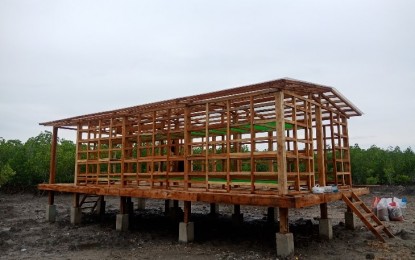
SOLAR-POWERED SEAWEED DRYER. The permanent-type dryer in Barangay Mampang at sixty percent completion. The solar-powered seaweed dryer is expected to benefit over 400 families in Zamboanga City. (Photo courtesy of DOST Region 9)
MANILA – The Department of Science and Technology - Region 9 (DOST-9) has allocated PHP2.6 million for the production of eight solar-powered seaweed dryers, as well as for the training on the use of the technology.
In an interview, DOST-9 chief Martin Wee said over 400 families are expected to benefit from this initiative.
"Seaweed farming is the bread and butter of the beneficiaries. The Zamboanga Peninsula is one of the seaweed producing regions in the country," he said.
The DOST has identified barangays Buenavista and Dita as potential partners in Zamboanga City, he added.
All the eight units of seaweed dryers, which will be placed in Zamboanga City's coastal area, are under construction. Wee said all the units would be completed by yearend.
Barangay Mampang reported 60-percent completion while awaiting the delivery of solar panels and greenhouse plastic, he added.
The seaweed dryer was developed by the University of the Philippines-Los Baños.
DOST Secretary Fortunato de la Peña said each unit of the dryer can hold and dry up to two tons of fresh seaweeds.
It makes the seaweed drying time to only two to three days, compared to the conventional method that takes 10-14 days, he said.
"Ronel Pangan, senior inventor, said the seaweed farmers in Palawan were among those initially engaged in the development and testing this technology. The design used in Palawan did not have solar panels which allow the 24/7 drying," Wee said.
The DOST will continue to identify new partners in Zamboanga del Sur, Zamboanga del Norte, and Zamboanga Sibugay which would mean additional units and budget allocation, he said. (PNA)
